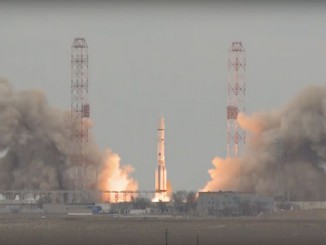
The European Space Agency is evaluating three medium-class Cosmic Vision mission proposals ranging from a Venus orbiter to an infrared observatory designed to study the formation of planets, stars and galaxies to a spacecraft that would take a census of high-energy gamma ray bursts across the first billion years of history.
The projects were selected from 25 proposals with a final selection expected in 2021.
The EnVision mission to Venus would build on the legacy of ESA’s Venus Express, focusing on the cloudy planet’s current geologic activity, and how that influences its thick atmosphere, to help scientists better understand how Venus succumbed to a runaway greenhouse effect while Earth evolved into a planet able to support life.
EnVision would map the surface of Venus with a cloud-penetrating imaging radar system at higher resolutions than NASA’s Magellan orbiter in the 1990s.
Looking farther afield, the proposed Spica mission is a joint European-Japanese project to build a far-infrared observatory with spectroscopic and survey capabilities that would push far beyond NASA’s Spitzer space telescope and ESA’s Herschel observatory. The goal is to improve understanding of how stars, planets and galaxies evolve by capturing infrared views inside dust clouds that normally block out infant stars and forming planets.
The third proposal under review is a spacecraft known as Theseus, designed to monitor brief, high-energy events in the early universe, including high-energy gamma ray bursts that occurred in the first billion years after the big bang. The goal is to better understand the life cycles of the first generations of stars.
Theseus would be able to pin down the locations of such events, allowing other instruments to find and study them, and follow up on gravitational wave detections by helping astronomers locate the sources of the space-warping events.
“Each of the selected proposals has high scientific value, and would ensure a continuation of Europe’s expertise in the fields of planetary science, astrophysics and cosmology,” said Günther Hasinger, ESA Director of Science.



